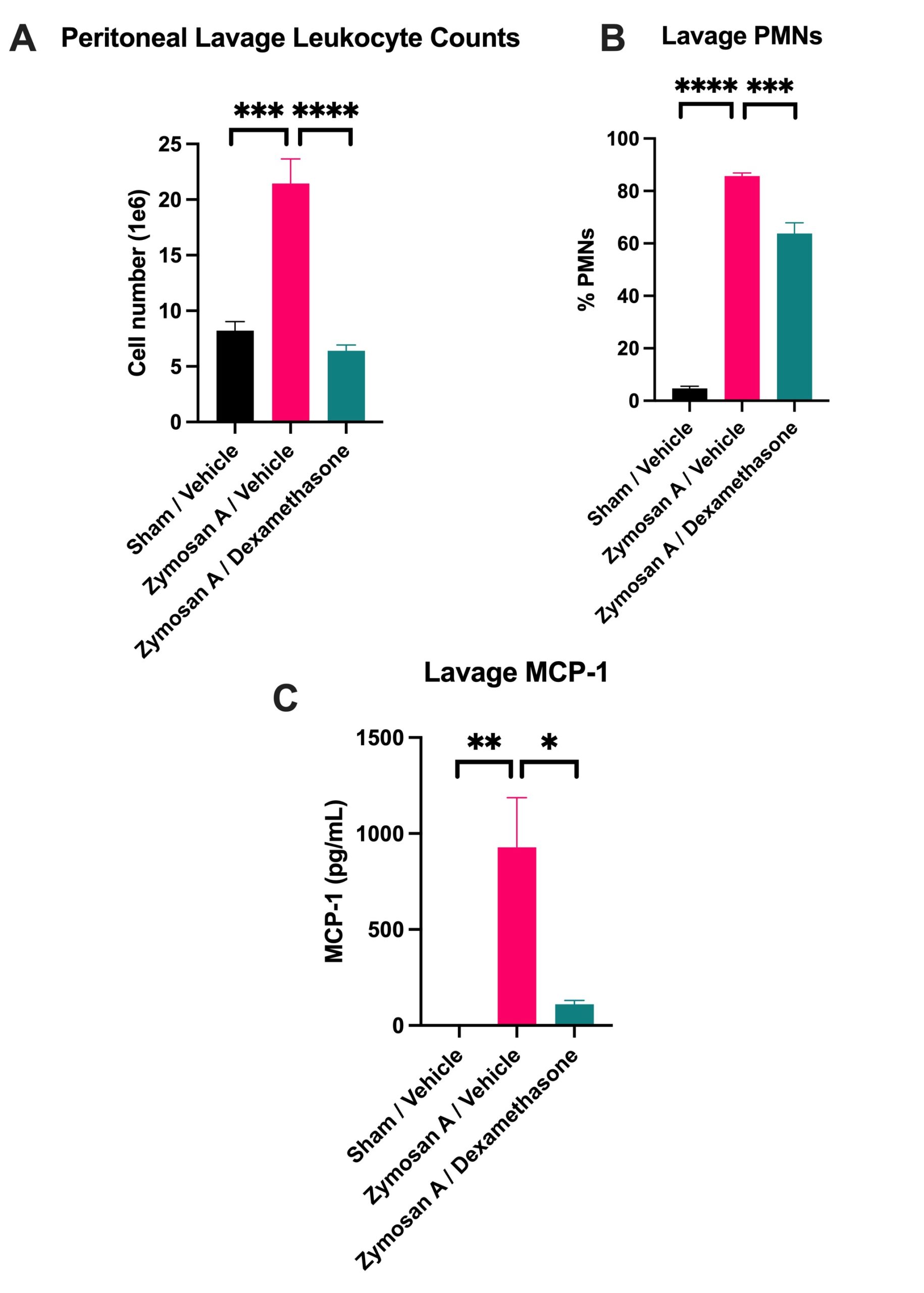Zymosan - A Induced Acute Peritonitis Model
Discover how Melior’s unique phenotypic screening platforms can uncover the untapped value of your candidate therapeutic
Leukocyte infiltration into a site of injury or irritation is an integral part of an inflammatory process associated with the peritonitis response. The peritonitis model described below utilizes Zymosan-A to induce leukocyte accumulation in the peritoneum. This model can be utilized as a model of inflammation, acute peritonitis and polymorphonucleocyte migration. Importantly, this model is an effective for detecting a test compound’s ability to attenuate inflammatory processes associated with peritonitis. Anti-inflammatory agents including steroidal and non-steroidal anti-inflammatory compounds are effective in reducing leukocyte recruitment and/or infiltration in this model. In the study described below, leukocyte infiltration was induced by intraperitoneal administration of Zymosan-A and the responsiveness of this model to the steroid prednisone was measured. This study validates the use of this model for detecting compounds that are potential therapeutics for peritonitis
Ready to get started or looking for a custom model?
Contact us today for more information about our bespoke research models and to discuss how we can help you answer your unique research questions.

Zymosan-A Induced Peritonitis. Zymosan-A was administered IP (0.25 mg/mouse). Dexamethasone was administered 30 minutes prior to Zymosan-A challenge. Four hours after Zymosan-A challenge, peritoneal lavage fluid was collected; A) Lavage cells were counted and analyzed for number of leukocytes, with differential analysis of neutrophils, lymphocytes, eosinophils, basophils, and monocytes; B) Polymorphonuclear leukocytes (PMN) levels were calculated by summing the number of neutrophils, eosinophils, and basophils; C) Lavage supernatant was analyzed for MCP-1 levels by ELISA.
Zymosan-A challenge caused an increase of leukocytes in the peritoneal cavity, including an increase in PMN levels. In addition, there was an increase in MCP-1 levels in the peritoneal cavity. Pretreatment with dexamethasone (20 mg/kg, PO) caused a significant decrease of leukocyte counts, PMNs, and MCP-1 in the peritoneal lavage fluid compared to the Zymosan A / Vehicle group (n=8/group; * p<0.05, ** p<0.005, *** p<0.001, **** p<0.0001).
The zymosan induced peritonitis model is typically run in an acute setting, performed in a single day with a single administration of test article. As a model of peritonitis it is similar to the Monocyte Infiltration model.
